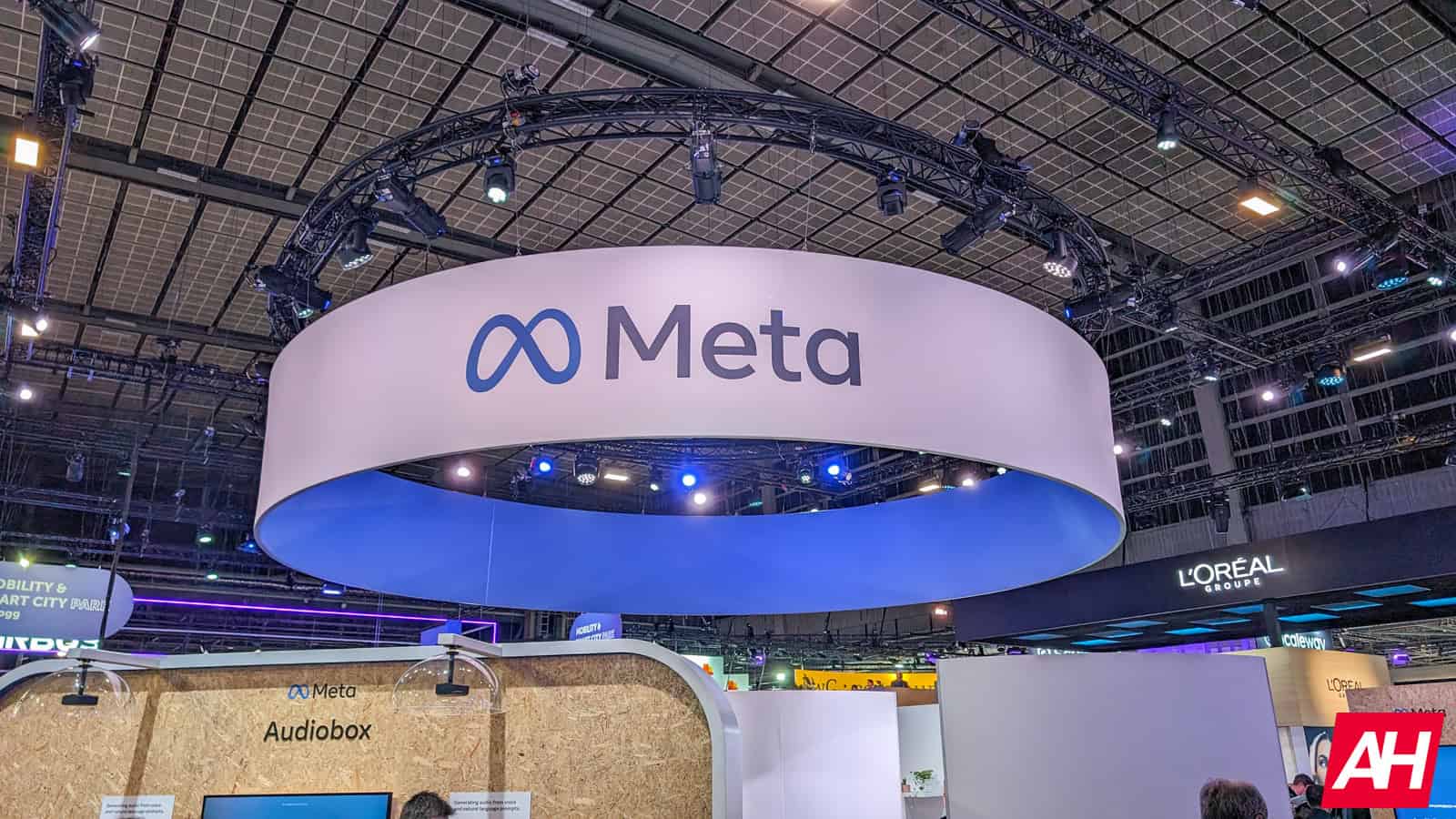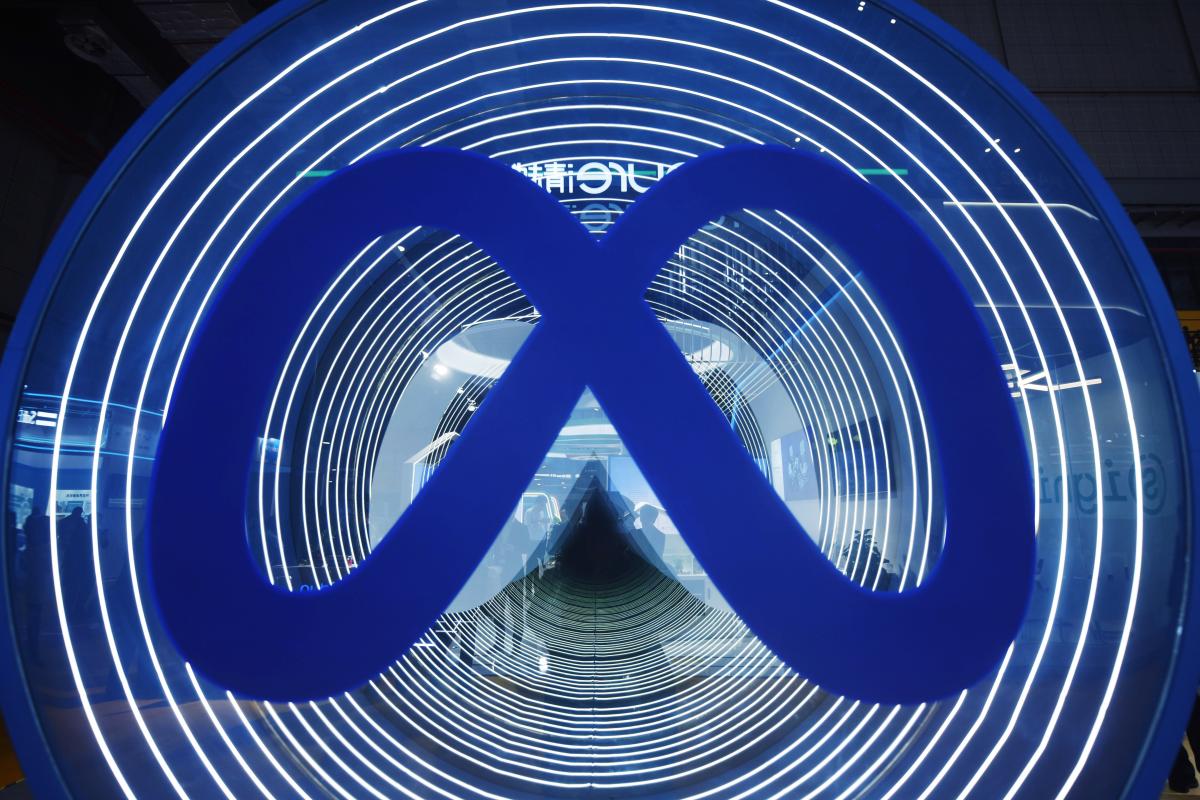Black Friday officially kicks off on November 29th, but if you plan to make that the only day you buy gifts this holiday season, you’re missing out. Several prominent retailers, including Best Buy and Target, have already started rolling out their holiday discounts online and in-store. Both retailers are offering price protection through most of the holiday shopping season as well, so if you buy early and the same item drops to a lower price, you can retroactively get that better deal.
Technology
What time do Black Friday deals start at Amazon, Walmart, and other retailers?

Whether you take advantage of the slew of early holiday deals or hold off until the day after Thanksgiving, it’s important to know how every major retailer is handling the shopping event this year. If you plan to spend some cash, here are the schedules and expectations for Amazon, Walmart, Target, and all the major retailers we know of.
Amazon has yet to announce a full Black Friday playbook, but it does have a landing page full of holiday deals, which the retailer may update and convert into its main hub for Black Friday — as well as Cyber Monday. There aren’t a ton of noteworthy early deals, at least in terms of tech, but Amazon is currently discounting a few pairs of Beats headphones. This includes the Beats Solo 4 and Beats Studio Pro, which are on sale for $99.99 ($100 off) and $169.99 ($180 off), respectively.
Just be aware that Amazon does not offer price matching, so price “protection” for many Amazon shoppers means buying the item at the lower price point and returning the original — which, unfortunately, is pretty wasteful.
Black Friday has already kicked off to some degree at Best Buy, with the retailer offering various specials via its “Holiday Savings” event, which runs through November 7th. That being said, the first wave of early “doorbuster” Black Friday deals will go live on Friday, November 8th, with new doorbusters to follow every Friday until November 20th. They’re open to everybody, though those who subscribe to My Best Buy Plus or My Best Buy Total will get access every Thursday before they become more widely available.
Best Buy’s main Black Friday event, which will feature returning doorbusters and new deals, is slated to begin on November 21st (yes, that’s a full eight days for a singular “Black Friday Sale”). The retailer’s Cyber Monday promo, meanwhile, will kick off on Sunday, December 1st, meaning Best Buy is running sales throughout the entire month of November.
Best Buy shoppers also get price protection, ensuring that if you purchase a qualifying item and it goes on to receive a bigger discount between November 1st and December 31st, you can request a refund for the difference through January 14th. As with some of the Black Friday promos, you’ll want to make sure you’re signed in with your My Best Buy account while browsing to ensure you’re getting the lowest price.
Like Best Buy, Target has launched a “Deal of the Day” holiday promo, which runs through December 24th for members of its free Target Circle program. Target will also host an Early Black Friday Sale, which will kick off on November 7th and last through November 9th.
Each Sunday in November, Target will drop new deals at brick-and-mortar stores and online, which you can preview a week beforehand using Target’s weekly circular. Target says it will be offering the best prices throughout the holiday season; however, the retailer also has a holiday price-match policy in place if it happens to offer a better deal on an item between now and December 24th. Just keep in mind that you may need to return to the store from which you purchased the product to receive a price match or call Target’s guest services for online purchases.
Walmart plans to start rolling out its Black Friday deals in multiple waves. The first begins online at 12PM ET on Monday, November 11th, for paying Walmart Plus subscribers (or 5PM ET for everybody else). An in-store sale will follow on November 15th at 6AM local time.
The second wave begins online at 12PM ET on Monday, November 25th, for Walmart Plus members (or 5PM ET for everybody else). An in-store sale will follow on Black Friday proper (November 29th) at 6AM local time.
Walmart will then hold its Cyber Monday sale online for Walmart Plus members beginning at 5PM ET on December 1st before opening it to non-members at 8PM ET.
If you want to get early access to any of the aforementioned waves, Walmart is offering 50 percent off an annual Walmart Plus membership through December 2nd. The current promo brings the cost of its premium service down to $49 a year. Along with early access to all of Walmart’s holiday discounts, Plus members also get free delivery on millions of products.
There is no word yet on Black Friday details from GameStop. We expect to hear more soon regarding store hours on Black Friday and possibly Thanksgiving, as well as some specifics regarding what kind of gaming deals it plans to offer throughout the holiday season.
Newegg has already started dropping its Black Friday deals. Like other retailers, it also offers price protection, so you can choose to buy early without having to worry about potential discounts down the line. Newegg is noting price-protected items with a colorful badge near the product’s name through November 20th, and if said product drops in price on or before November 30th, Newegg will automatically refund the difference to the original payment method.
Costco recently announced two deals events ahead of Black Friday, including a “Holiday Savings” event that runs through December 2nd online and in-store. There’s also an online “November Savings” promo, which runs through November 30th. Costco will continue to drop new deals throughout November, which you can preview here. There aren’t a ton of notable tech highlights (yet), but Costco will be discounting the noise-canceling Bose QuietComfort Ultra Earbuds to $229.99 ($70 off) starting on November 18th. Costco will also throw in a $50 gift card from one of several retailers, including Apple and Google.
Technology
NYT Strands today: hints, spangram and answers for Tuesday, November 5

Strands is a brand new daily puzzle from the New York Times. A trickier take on the classic word search, you’ll need a keen eye to solve this puzzle.
Like Wordle, Connections, and the Mini Crossword, Strands can be a bit difficult to solve some days. There’s no shame in needing a little help from time to time. If you’re stuck and need to know the answers to today’s Strands puzzle, check out the solved puzzle below.
How to play Strands
You start every Strands puzzle with the goal of finding the “theme words” hidden in the grid of letters. Manipulate letters by dragging or tapping to craft words; double-tap the final letter to confirm. If you find the correct word, the letters will be highlighted blue and will no longer be selectable.
If you find a word that isn’t a theme word, it still helps! For every three non-theme words you find that are at least four letters long, you’ll get a hint — the letters of one of the theme words will be revealed and you’ll just have to unscramble it.
Every single letter on the grid is used to spell out the theme words and there is no overlap. Every letter will be used once, and only once.
Each puzzle contains one “spangram,” a special theme word (or words) that describe the puzzle’s theme and touches two opposite sides of the board. When you find the spangram, it will be highlighted yellow.
The goal should be to complete the puzzle quickly without using too many hints.
Hint for today’s Strands puzzle
Today’s theme is “More than just sports”
Here’s a hint that might help you: clubs you might join.
Today’s Strand answers

Today’s spanagram
We’ll start by giving you the spangram, which might help you figure out the theme and solve the rest of the puzzle on your own:
Today’s Strands answers
- BAND
- CHOIR
- ORCHESTRA
- DRAMA
- DEBATE
- YEARBOOK
Technology
Meta’s AI adult classifier will detect age falsification attempts

This year, social media companies have been in the spotlight of the authorities. Lawsuits have hit big names like Meta and TikTok for their failure to adequately protect underage users. Under all the pressure, some, like Instagram, have been implementing harsh privacy measures on teen accounts. Now, Meta has offered insight into its new AI-powered adult classifier.
For months now, underage accounts (users under 16) on Instagram have received the “teen account” label. Profiles labeled as such have the most restrictive privacy restrictions by default. This should prevent children or teens from directly contacting potential bad actors or predators. Because these restrictions may limit features, some teens may try to bypass them.
Meta offers more details about the AI-powered adult classifier that Instagram will get
One way that minors might try to get around teen account restrictions is to create a new profile with a fake birth date. With that in mind, Meta announced in September that it will launch an AI-powered adult classifier tool to automatically detect such cases. Now Allison Hartnett, Meta’s director of product management for youth and social impact, has revealed more details about how it will work.
According to Hartnett, the tool will analyze multiple parameters to make a decision. These include the accounts a user follows in particular and the type of content they tend to interact with. Meta’s systems will also be on the lookout for potentially suspicious behavior when creating a new Instagram account, for example, using an email associated with an existing profile or even obtaining the device ID. This way, they can make a more accurate decision about who is creating a new profile.
Meta’s AI adult classifier will be able to label accounts suspected of belonging to minors as “teens,” automatically applying all restrictions. Accounts with those restrictions cannot have them removed without prior authorization from a parent. The company promises to provide an appeal tool if it incorrectly labels an account as “teen.” However, there is no date yet for the appeal tool’s availability.
Instagram will ask for valid IDs or AI-powered facial analysis when trying to change age
There may also be cases of teenagers trying to remove restrictions by changing their date of birth. Here, Instagram will ask for a valid government-issued ID. Users will also have the option to upload a selfie video through Yoti’s technology. The latter offers advanced AI-powered recognition services that can even determine a person’s age. Meta has already turned to Yoti to verify the age of users of Facebook’s dating option.
Technology
Meta opens its Llama AI models to government agencies for national security

Meta is opening up its Llama AI models to government agencies and contractors working on national security, the company said in . The group includes more than a dozen private sector companies that partner with the US government, including Amazon Web Services, Oracle and Microsoft, as well as defense contractors like Palantir and Lockheed Martin.
Mark Zuckerberg hinted at the move last week during Meta’s earnings call, when the company was “working with the public sector to adopt Llama across the US government.” Now, Meta is offering more details about the extent of that work.
Oracle, for example, is “building on Llama to synthesize aircraft maintenance documents so technicians can more quickly and accurately diagnose problems, speeding up repair time and getting critical aircraft back in service.” Amazon Web Services and Microsoft, according to Meta, are “using Llama to support governments by hosting our models on their secure cloud solutions for sensitive data.”
Meta is also providing similar access to Llama to governments and contractors in the UK, Canada, Australia and New Zealand, Bloomberg . In a blog post, Meta’s President of Global Affairs, Nick Clegg, suggested the partnerships will help the US compete with China in the global arms race over artificial intelligence. “We believe it is in both America and the wider democratic world’s interest for American open source models to excel and succeed over models from China and elsewhere,” he wrote. “As an American company, and one that owes its success in no small part to the entrepreneurial spirit and democratic values the United States upholds, Meta wants to play its part to support the safety, security and economic prosperity of America – and of its closest allies too.”
Technology
UC San Diego, Tsinghua University researchers just made AI way better at knowing when to ask for help

Join our daily and weekly newsletters for the latest updates and exclusive content on industry-leading AI coverage. Learn More
A team of computer scientists has developed a method that helps artificial intelligence understand when to use tools versus relying on built-in knowledge, mimicking how human experts solve complex problems.
The research from the University of California San Diego and Tsinghua University demonstrates a 28% improvement in accuracy when AI systems learn to balance internal knowledge with external tools — a critical capability for deploying AI in scientific work.
How scientists taught AI to make better decisions
“While integrating LLMs with tools can increase reliability, this approach typically results in over-reliance on tools, diminishing the model’s ability to solve simple problems through basic reasoning,” the researchers write in their paper. “In contrast, human experts first assess problem complexity using domain knowledge before choosing an appropriate solution approach.”
The new method, called “Adapting While Learning,” uses a two-step process to train AI systems. First, the model learns directly from solutions generated using external tools, helping it internalize domain knowledge. Then, it learns to categorize problems as either “easy” or “hard” and decides whether to use tools accordingly.

Small AI model outperforms larger systems on complex tasks
What makes this development significant is its efficiency-first approach. Using a language model with just 8 billion parameters — far smaller than industry giants like GPT-4 — the researchers achieved a 28.18% improvement in answer accuracy and a 13.89% increase in tool usage precision across their test datasets. The model demonstrated particular strength in specialized scientific tasks, outperforming larger models in specific domains.
This success challenges a fundamental assumption in AI development: that bigger models necessarily yield better results. Instead, the research suggests that teaching AI when to use tools versus rely on internal knowledge — much like training a junior scientist to know when to trust their calculations versus consult specialized equipment — may be more important than raw computational power.

The rise of smaller, smarter AI models
This research aligns with a broader industry shift toward more efficient AI models in 2024. Major players including Hugging Face, Nvidia, OpenAI, Meta, Anthropic, and H2O.ai have all released smaller but highly capable models this year.
Hugging Face’s SmolLM2, with versions as small as 135 million parameters, can run directly on smartphones. H2O.ai’s compact document analysis models have outperformed tech giants’ larger systems on specialized tasks. Even OpenAI entered the small model arena with GPT-4o Mini, offering similar capabilities at a fraction of the cost.
This trend toward “AI downsizing” reflects growing recognition that bigger isn’t always better — specialized, efficient models can often match or exceed the performance of their larger counterparts while using far fewer computational resources.
The technical approach involves two distinct learning phases. During training, the model first undergoes what the researchers call “World Knowledge Distillation” (WKD), where it learns from solutions generated using external tools. This helps it build up internal expertise.
The second phase, “Tool Usage Adaptation” (TUA), teaches the system to classify problems based on its own confidence and accuracy in solving them directly. For simpler problems, it maintains the same approach as in WKD. But for more challenging problems, it learns to switch to using external tools.
Business impact: More efficient AI systems for complex scientific work
For enterprises deploying AI systems, this research addresses a fundamental challenge that has long plagued the industry. Current AI systems represent two extremes: they either constantly reach for external tools — driving up computational costs and slowing down simple operations — or dangerously attempt to solve everything internally, leading to potential errors on complex problems that require specialized tools.
This inefficiency isn’t just a technical issue — it’s a significant business problem. Companies implementing AI solutions often find themselves paying premium prices for cloud computing resources to run external tools, even for basic tasks their AI should handle internally. On the flip side, organizations that opt for standalone AI systems risk costly mistakes when these systems attempt complex calculations without proper verification tools.
The researchers’ approach offers a promising middle ground. By teaching AI to make human-like decisions about when to use tools, organizations could potentially reduce their computational costs while maintaining or even improving accuracy. This is particularly valuable in fields like scientific research, financial modeling, or medical diagnosis, where both efficiency and precision are crucial.
Moreover, this development suggests a future where AI systems could be more cost-effective and reliable partners in scientific work, capable of making nuanced decisions about when to leverage external resources — much like a seasoned professional who knows exactly when to consult specialized tools versus rely on their expertise.
The power of knowing when to ask for help
Beyond the immediate technical achievements, this research challenges the bigger-is-better paradigm that has dominated AI development. In demonstrating that a relatively small model can outperform its larger cousins by making smarter decisions about tool use, the team points toward a more sustainable and practical future for AI.
The implications extend far beyond academic research. As AI increasingly enters domains where mistakes carry real consequences – from medical diagnosis to climate modeling – the ability to know when to seek help becomes crucial. This work suggests a future where AI systems won’t just be powerful, but prudent – knowing their limitations just as skilled professionals do.
In essence, the researchers have taught AI something fundamentally human: sometimes the smartest decision is knowing when to ask for help.
Source link
Technology
GM says it has become the No. 2 seller of EVs in the US

GM is claiming the number two spot in EV sales in the US for the third quarter of this year, selling 32,000 electric vehicles. The automaker produces EVs across multiple brands running on the same platform, like Chevy’s Silverado, Blazer, and Equinox EVs, as well as the GMC Hummer EV and the Cadillac Lyriq.
GM says it has sold a total of 370,000 EVs in North America since 2016, including 300,000 in the US specifically. Tesla is still the undisputed leader, with more than 5 million vehicles sold since 2008.
In an email with The Verge, GM’s executive director of finance and sales communications James Cain wrote that sales have accelerated since the company built a dedicated EV platform (formerly known as Ultium) and began producing battery cells through its joint ventures with LG and Samsung SDI. GM’s third-quarter EV sales beat out rival Ford by about 8,600 units, according to Kelley Blue Book, as reported by The New York Times.
Meanwhile, Ford spokesperson Dan Barbossa claims the Blue Oval remains “America’s No. 2 best-selling EV brand behind Tesla.” In an email with The Verge, Barbossa wrote:
We remain the No. 2 brand. GM is adding every brand EV (Chevy, GMC, Cadillac, etc) they sell and making a different claim.
Still, GM has a ways to go before it achieves the goal of producing 1 million EVs, which it previously projected it would accomplish by 2025. The company later distanced itself from that target when it became clear that production troubles, charging difficulties, and high interest rates would slow down the rate of growth in EV sales in the US.
Ford had a strong early start with solid sales of its all-electric Mustang Mach-E, launched in 2019, and the F-150 Lightning electric truck in 2022. During that timeframe, GM only had the Chevy Bolt, built on an older battery platform. The Hummer EV truck launched in 2020, but overall EV sales were slow amid production troubles.
Ford also hit some snags along the way, including parts shortages. The company has lost billions of dollars in its Model e division, where revenues have not kept up with spending. Ford recently canceled a planned three-row SUV and has paused production of the F-150 Lightning until next year. Ford is placing a lot of its hopes on its skunkworks team in Silicon Valley, developing its next-gen platform for cheaper EVs.
Technology
NYT Strands today — hints, answers and spangram for Tuesday, November 5 (game #247)

Strands is the NYT’s latest word game after the likes of Wordle, Spelling Bee and Connections – and it’s great fun. It can be difficult, though, so read on for my Strands hints.
Want more word-based fun? Then check out my Wordle today, NYT Connections today and Quordle today pages for hints and answers for those games.
SPOILER WARNING: Information about NYT Strands today is below, so don’t read on if you don’t want to know the answers.

NYT Strands today (game #247) – hint #1 – today’s theme
What is the theme of today’s NYT Strands?
• Today’s NYT Strands theme is… More than just sports
NYT Strands today (game #247) – hint #2 – clue words
Play any of these words to unlock the in-game hints system.
- BEAT
- DART
- CHAT
- MARE
- DARE
- STORE
NYT Strands today (game #247) – hint #3 – spangram
What is a hint for today’s spangram?
• In the club
NYT Strands today (game #247) – hint #4 – spangram position
What are two sides of the board that today’s spangram touches?
First: left, 4th row
Last: right, 3rd row
Right, the answers are below, so DO NOT SCROLL ANY FURTHER IF YOU DON’T WANT TO SEE THEM.
NYT Strands today (game #247) – the answers

The answers to today’s Strands, game #247, are…
- BAND
- CHOIR
- DRAMA
- DEBATE
- YEARBOOK
- ORCHESTRA
- SPANGRAM: AFTERSCHOOL
- My rating: Moderate
- My score: 6 hints
Well, this was a disaster. I needed six hints to solve today’s Strands, which means I needed hints for every single answer bar the spangram, which I got at the end when there were no other words that could possibly fit. And really I had no idea what the theme was until very late on.
Part of the problem was that in the UK, where I am, several of these AFTERSCHOOL activities are not common – or at least have different names. I’ve never seen the likes of BAND, YEARBOOK or ORCHESTRA listed among my kids’ after-school activities, anyway. DEBATE, CHOIR and DRAMA are there – plus dozens of sports and many other activities – but I didn’t put them together to make the theme.
How did you do today? Send me an email and let me know.
Yesterday’s NYT Strands answers (Monday, 4 November, game #246)
- TICK
- MINUTE
- JIFFY
- FLASH
- MOMENT
- SECOND
- MOMENT
- INSTANT
- SPANGRAM: SMALLTIME
What is NYT Strands?
Strands is the NYT’s new word game, following Wordle and Connections. It’s now out of beta so is a fully fledged member of the NYT’s games stable and can be played on the NYT Games site on desktop or mobile.
I’ve got a full guide to how to play NYT Strands, complete with tips for solving it, so check that out if you’re struggling to beat it each day.
-

 Science & Environment2 months ago
Science & Environment2 months agoHow to unsnarl a tangle of threads, according to physics
-

 Technology1 month ago
Technology1 month agoIs sharing your smartphone PIN part of a healthy relationship?
-

 Science & Environment2 months ago
Science & Environment2 months ago‘Running of the bulls’ festival crowds move like charged particles
-

 Science & Environment2 months ago
Science & Environment2 months agoHyperelastic gel is one of the stretchiest materials known to science
-

 Technology2 months ago
Technology2 months agoWould-be reality TV contestants ‘not looking real’
-

 Science & Environment1 month ago
Science & Environment1 month agoX-rays reveal half-billion-year-old insect ancestor
-

 Science & Environment2 months ago
Science & Environment2 months agoMaxwell’s demon charges quantum batteries inside of a quantum computer
-

 Science & Environment2 months ago
Science & Environment2 months agoSunlight-trapping device can generate temperatures over 1000°C
-

 Money1 month ago
Money1 month agoWetherspoons issues update on closures – see the full list of five still at risk and 26 gone for good
-

 Technology1 month ago
Technology1 month agoGmail gets redesigned summary cards with more data & features
-

 Sport1 month ago
Sport1 month agoAaron Ramsdale: Southampton goalkeeper left Arsenal for more game time
-

 Science & Environment2 months ago
Science & Environment2 months agoPhysicists have worked out how to melt any material
-

 Football1 month ago
Football1 month agoRangers & Celtic ready for first SWPL derby showdown
-

 Sport1 month ago
Sport1 month agoBoxing: World champion Nick Ball set for Liverpool homecoming against Ronny Rios
-

 Technology1 month ago
Technology1 month agoEpic Games CEO Tim Sweeney renews blast at ‘gatekeeper’ platform owners
-

 Technology1 month ago
Technology1 month agoUkraine is using AI to manage the removal of Russian landmines
-

 News1 month ago
News1 month agoWoman who died of cancer ‘was misdiagnosed on phone call with GP’
-

 MMA1 month ago
MMA1 month ago‘Dirt decision’: Conor McGregor, pros react to Jose Aldo’s razor-thin loss at UFC 307
-

 Science & Environment2 months ago
Science & Environment2 months agoLaser helps turn an electron into a coil of mass and charge
-

 Technology1 month ago
Technology1 month agoRussia is building ground-based kamikaze robots out of old hoverboards
-

 Science & Environment2 months ago
Science & Environment2 months agoQuantum ‘supersolid’ matter stirred using magnets
-

 Science & Environment2 months ago
Science & Environment2 months agoLiquid crystals could improve quantum communication devices
-

 MMA1 month ago
MMA1 month agoDana White’s Contender Series 74 recap, analysis, winner grades
-

 News1 month ago
News1 month ago‘Blacks for Trump’ and Pennsylvania progressives play for undecided voters
-

 Technology1 month ago
Technology1 month agoSamsung Passkeys will work with Samsung’s smart home devices
-
Business1 month ago
how UniCredit built its Commerzbank stake
-

 MMA4 weeks ago
MMA4 weeks ago‘Uncrowned queen’ Kayla Harrison tastes blood, wants UFC title run
-

 Science & Environment2 months ago
Science & Environment2 months agoA new kind of experiment at the Large Hadron Collider could unravel quantum reality
-

 Technology1 month ago
Technology1 month agoMicrosoft just dropped Drasi, and it could change how we handle big data
-

 Science & Environment2 months ago
Science & Environment2 months agoWhy this is a golden age for life to thrive across the universe
-

 News1 month ago
News1 month agoRwanda restricts funeral sizes following outbreak
-

 Technology1 month ago
Technology1 month agoCheck, Remote, and Gusto discuss the future of work at Disrupt 2024
-

 News1 month ago
News1 month agoNavigating the News Void: Opportunities for Revitalization
-

 TV1 month ago
TV1 month agoসারাদেশে দিনব্যাপী বৃষ্টির পূর্বাভাস; সমুদ্রবন্দরে ৩ নম্বর সংকেত | Weather Today | Jamuna TV
-

 MMA1 month ago
MMA1 month agoPereira vs. Rountree prediction: Champ chases legend status
-

 Sport1 month ago
Sport1 month ago2024 ICC Women’s T20 World Cup: Pakistan beat Sri Lanka
-

 Entertainment1 month ago
Entertainment1 month agoBruce Springsteen endorses Harris, calls Trump “most dangerous candidate for president in my lifetime”
-

 Technology1 month ago
Technology1 month agoWhy Machines Learn: A clever primer makes sense of what makes AI possible
-

 News1 month ago
News1 month agoCornell is about to deport a student over Palestine activism
-

 News1 month ago
News1 month agoMassive blasts in Beirut after renewed Israeli air strikes
-

 Business1 month ago
Business1 month agoWhen to tip and when not to tip
-

 Technology1 month ago
Technology1 month agoMicrophone made of atom-thick graphene could be used in smartphones
-

 Business1 month ago
Business1 month agoWater companies ‘failing to address customers’ concerns’
-

 Sport1 month ago
Sport1 month agoWXV1: Canada 21-8 Ireland – Hosts make it two wins from two
-

 Football1 month ago
Football1 month ago'Rangers outclassed and outplayed as Hearts stop rot'
-

 Science & Environment2 months ago
Science & Environment2 months agoQuantum forces used to automatically assemble tiny device
-

 Science & Environment2 months ago
Science & Environment2 months agoITER: Is the world’s biggest fusion experiment dead after new delay to 2035?
-

 News2 months ago
News2 months ago▶️ Hamas in the West Bank: Rising Support and Deadly Attacks You Might Not Know About
-

 Science & Environment2 months ago
Science & Environment2 months agoNuclear fusion experiment overcomes two key operating hurdles
-

 Sport1 month ago
Sport1 month agoChina Open: Carlos Alcaraz recovers to beat Jannik Sinner in dramatic final
-

 Football1 month ago
Football1 month agoWhy does Prince William support Aston Villa?
-

 MMA1 month ago
MMA1 month agoKayla Harrison gets involved in nasty war of words with Julianna Pena and Ketlen Vieira
-

 News1 month ago
News1 month ago▶ Hamas Spent $1B on Tunnels Instead of Investing in a Future for Gaza’s People
-
Business1 month ago
Top shale boss says US ‘unusually vulnerable’ to Middle East oil shock
-

 Technology1 month ago
Technology1 month agoMusk faces SEC questions over X takeover
-

 Technology1 month ago
Technology1 month agoSingleStore’s BryteFlow acquisition targets data integration
-

 News1 month ago
News1 month agoHull KR 10-8 Warrington Wolves – Robins reach first Super League Grand Final
-

 Sport1 month ago
Sport1 month agoPremiership Women’s Rugby: Exeter Chiefs boss unhappy with WXV clash
-

 Science & Environment2 months ago
Science & Environment2 months agoA slight curve helps rocks make the biggest splash
-

 Technology1 month ago
Technology1 month agoMeta has a major opportunity to win the AI hardware race
-

 Womens Workouts1 month ago
Womens Workouts1 month ago3 Day Full Body Women’s Dumbbell Only Workout
-
Business1 month ago
Bank of England warns of ‘future stress’ from hedge fund bets against US Treasuries
-

 Technology1 month ago
Technology1 month agoLG C4 OLED smart TVs hit record-low prices ahead of Prime Day
-

 MMA1 month ago
MMA1 month ago‘I was fighting on automatic pilot’ at UFC 306
-

 Sport1 month ago
Sport1 month agoShanghai Masters: Jannik Sinner and Carlos Alcaraz win openers
-

 Sport1 month ago
Sport1 month agoCoco Gauff stages superb comeback to reach China Open final
-

 News1 month ago
News1 month agoGerman Car Company Declares Bankruptcy – 200 Employees Lose Their Jobs
-

 Sport1 month ago
Sport1 month agoWales fall to second loss of WXV against Italy
-
Business1 month ago
DoJ accuses Donald Trump of ‘private criminal effort’ to overturn 2020 election
-
Business1 month ago
Sterling slides after Bailey says BoE could be ‘a bit more aggressive’ on rates
-

 TV1 month ago
TV1 month agoTV Patrol Express September 26, 2024
-

 Technology1 month ago
Technology1 month agoUniversity examiners fail to spot ChatGPT answers in real-world test
-

 Science & Environment2 months ago
Science & Environment2 months agoTime travel sci-fi novel is a rip-roaringly good thought experiment
-

 Sport1 month ago
Sport1 month agoSturm Graz: How Austrians ended Red Bull’s title dominance
-

 MMA1 month ago
MMA1 month agoKetlen Vieira vs. Kayla Harrison pick, start time, odds: UFC 307
-

 Technology1 month ago
Technology1 month agoThe best shows on Max (formerly HBO Max) right now
-

 Technology1 month ago
Technology1 month agoIf you’ve ever considered smart glasses, this Amazon deal is for you
-

 Money4 weeks ago
Money4 weeks agoTiny clue on edge of £1 coin that makes it worth 2500 times its face value – do you have one lurking in your change?
-

 Technology1 month ago
Technology1 month agoJ.B. Hunt and UP.Labs launch venture lab to build logistics startups
-

 Technology1 month ago
Technology1 month agoQuoroom acquires Investory to scale up its capital-raising platform for startups
-

 MMA1 month ago
MMA1 month agoPennington vs. Peña pick: Can ex-champ recapture title?
-
Business1 month ago
The search for Japan’s ‘lost’ art
-

 Sport4 weeks ago
Sport4 weeks agoNew Zealand v England in WXV: Black Ferns not ‘invincible’ before game
-

 Sport1 month ago
Sport1 month agoMan City ask for Premier League season to be DELAYED as Pep Guardiola escalates fixture pile-up row
-

 Science & Environment2 months ago
Science & Environment2 months agoNerve fibres in the brain could generate quantum entanglement
-

 News2 months ago
News2 months ago▶️ Media Bias: How They Spin Attack on Hezbollah and Ignore the Reality
-

 Technology1 month ago
Technology1 month agoAmazon’s Ring just doubled the price of its alarm monitoring service for grandfathered customers
-
Travel1 month ago
World of Hyatt welcomes iconic lifestyle brand in latest partnership
-

 News1 month ago
News1 month agoTrump returns to Pennsylvania for rally at site of assassination attempt
-

 Business1 month ago
Business1 month agoStocks Tumble in Japan After Party’s Election of New Prime Minister
-

 Technology1 month ago
Technology1 month agoTexas is suing TikTok for allegedly violating its new child privacy law
-

 Technology1 month ago
Technology1 month agoOpenAI secured more billions, but there’s still capital left for other startups
-

 News1 month ago
News1 month agoFamily plans to honor hurricane victim using logs from fallen tree that killed him
-

 Money1 month ago
Money1 month agoPub selling Britain’s ‘CHEAPEST’ pints for just £2.60 – but you’ll have to follow super-strict rules to get in
-

 Sport1 month ago
Sport1 month agoURC: Munster 23-0 Ospreys – hosts enjoy second win of season
-

 Entertainment1 month ago
Entertainment1 month agoNew documentary explores actor Christopher Reeve’s life and legacy
-

 Science & Environment2 months ago
Science & Environment2 months agoHow to wrap your mind around the real multiverse
-

 MMA1 month ago
MMA1 month agoHow to watch Salt Lake City title fights, lineup, odds, more
-

 MMA1 month ago
MMA1 month agoUFC 307’s Ketlen Vieira says Kayla Harrison ‘has not proven herself’
-
Business1 month ago
‘Let’s be more normal’ — and rival Tory strategies

You must be logged in to post a comment Login